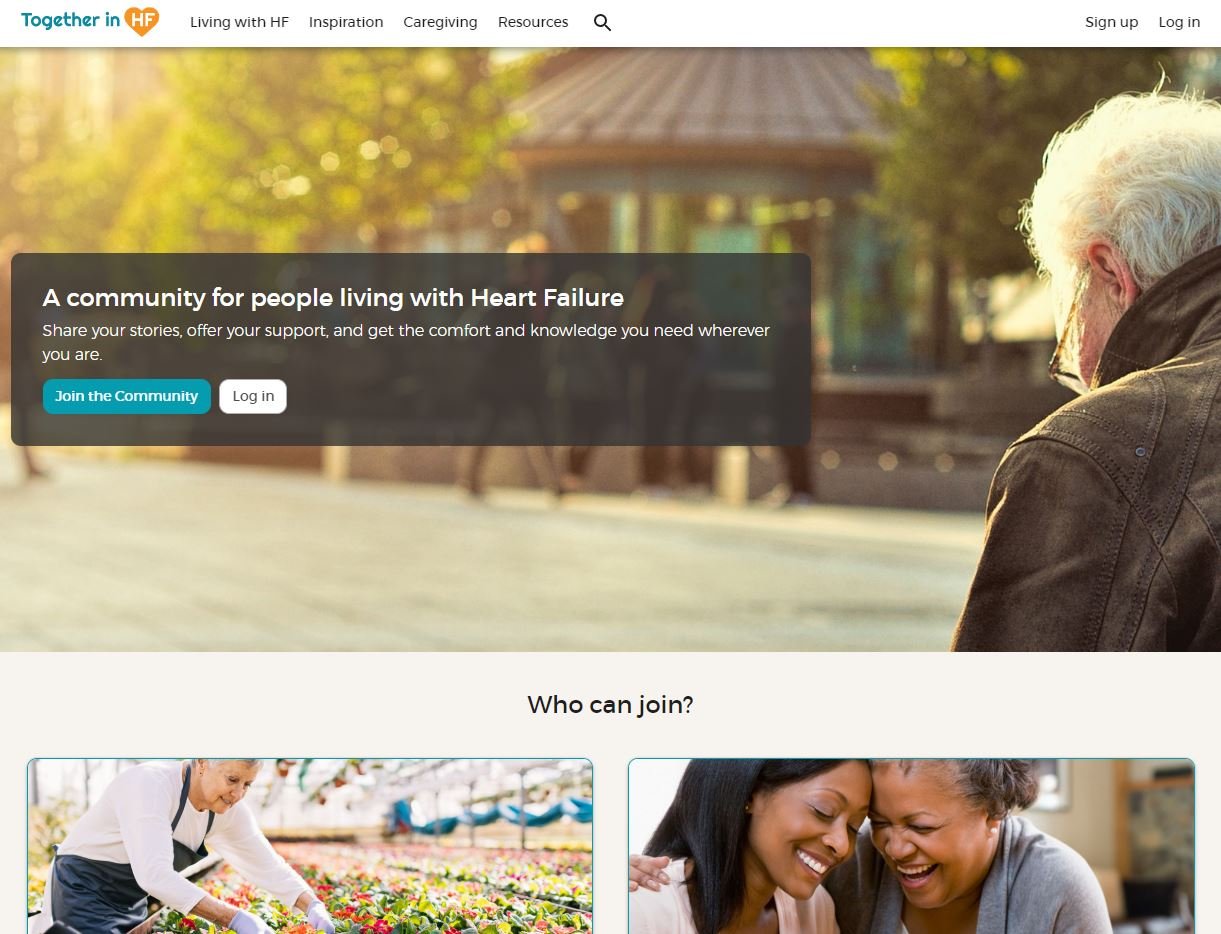What Does a Pharmaceutical Digital Strategy Look Like?
A pharmaceutical digital strategy: We know we need to have one, but why are we hesitant about creating one?
The pharmaceutical industry has always lagged behind other industries when it comes to digital. This is the case across the value chain, R&D, distribution as well as for marketing and sales (which will be the focus of this article).
I think healthcare providers as well as the drug development and medical device manufacturers, for B2C and B2B, are both to blame here. It’s an industry-whole problem.
This is an issue because digital is becoming more and more prominent in the lives of the customers of both B2B and B2C entities. And it’s not a case of needing to be there on those digital channels to sell. It’s more about meeting the expectations of those customers on the channels that they choose, and prefer, to use. This is what marketing is all about.
Subscribe for marketing insights via email
To reiterate, McKinsey has identified five compelling reasons why pharmaceutical organisations must introduce (or reinvent) their digital strategies before it is too late:
Patient behaviour is changing
Government agencies are moving surprisingly quickly
Trial data is necessary but no longer sufficient
Care is evolving
Competition is faster and fiercer.
These reasons, however, are often known to pharmaceutical marketers. The challenge for those marketers comes from understanding digital strategy from a pharmaceutical standpoint, identifying the opportunities, and then taking the marketing of the pharmaceutical organisation in a different strategic direction.
Essentially, understanding what a digital strategy looks like in the pharmaceutical sectors.
WHAT DOES A PHARMACEUTICAL DIGITAL STRATEGY LOOK LIKE?
Digital has already started to change how the pharmaceutical and healthcare industry operates (as we shall see further along in this article). But since the industry is vast, with the organisations within so big, there is much still left to do - especially within marketing and sales.
To answer the question often presented, a digital strategy could look like a mobile-driven content programme or a shift to an always-open customer service channel via a website or Facebook Live Chat or even an ABM strategy to target the pharmaceutical organisations via social media and other digital communities that makes targeted networking possible.
Alternatively, a digital strategy that might have been adopted in the last few months due to the cancellation of events throughout the pharmaceutical and life science calendar is to focus on delivering digital material to delegates of some of those events which have been moved into digital environments. The COVID-19 crisis has meant that most pharmaceutical organisations are required to move towards digital-only strategies - with some launching new business models - to survive and to reach their target audiences. Digital innovations, which were always there for adoption, are now being accessed to restructure portfolios, change business processes and collaborate in strategic alliances.
Without digital, and its potential for collaboration and integration, where would we be right now?
Pharma IQ demonstrates how this sort of digital enablement could also work in the healthcare sector: “Traditionally, when a patient suffered from a condition, they would make an appointment with a doctor. Previously, the patients relied on the instructions and drugs prescribed by the doctor. However, with digitisation, patients usually research everything before seeing a doctor. They match their symptoms to conditions. Some may even talk to other patients with a similar problem and try to devise a cure.”
Many separate components exist within a pharmaceutical digital strategy, with the key elements falling in the categories presented in the below chart.
We’ll present some relevant insights in this section of what a pharmaceutical digital strategy might look like from a practical standpoint, alongside the chart’s suggestions, where we’ll also reference instances (generally) how these implications fit in within B2B and B2C pharmaceutical organisations to get the strategy off to the best start.
1. EMBRACE INNOVATIONS OUTSIDE OF THE SECTOR
The digital strategies which you see in pharma are largely down to innovations and digital developments originating outside of the sector. Our friends at Drug Discovery World accurately put it: “The innovations coming from outside the traditional healthcare industry span a wide spectrum of products and services, but all take advantage of advances in digital technologies and the ability to analyse and present large amounts of data in new ways. From new biosensor technologies and smart devices to portals and physician guidance tools, there are numerous exciting breakthroughs that allow enhanced self-monitoring capabilities and patient adherence – and ultimately superior clinical decision-making and treatment success.” I would certainly be keeping an eye outside of pharma for a head start with any potential digital strategy…
2. INVEST IN THE RIGHT DIGITAL TALENT
Many pharmaceutical organisations have started to build on their digital talent internally. Setting up digital leads and teams within divisions, and this is good. Investing in the right digital talent is key to getting a digital strategy off the ground and working for the organisation. This trend needs to continue and higher management needs to continually invest in digital programmes by providing the talent, training, funding and resources for these teams to be able to scale so that the digital initiatives can have a significant impact. Internal talent needs to be able to also integrate with other departments, as well as with external providers should it be needed, and the method in which all parties need to be defined from the leadership team. If you are responsible for your digital strategy, befriend a senior sponsor from the leadership team - do not run such a programme without this buy-in.
3. EXPERIMENT
The sheer options available for a digital strategy could be part of the issue of slow adoption. A lack of prior knowledge with such programs within the organisations, and generally a lack of experience, doesn’t offer pharma professionals an obvious place to start. Any initiative needs a pilot period to determine if the market responds to the new strategy in the way that it imagined. If the strategy, perhaps a mobile-first approach to communications would increase the number of meetings with business professionals or would increase patient awareness for a disease, then the strategy can be rolled out fully. Even experienced digital strategists can’t get it right every time, so there is a need for experimentation.
4. DATA-DRIVEN DECISIONS AT FIRST, AND FROM THEN ONWARDS
There is one aspect of pharmaceutical organisations that remain consistent for everyone: Data is usually in abundance. I like the graphic below courtesy of American Pharmaceutical Review which shows the evolution of data and analytics, where pharmaceutical and life sciences organisations. presently fall between the realm of diagnostic and predictive use. This shows that although the data is there, with the potential to do more available, pharma is still stuck in the middle and not quite pushing forward to the next level.
Some of this data will sit within commercial departments. This is data that needs to be accessed for a digital strategy to flourish. Prescribing behaviours or sales cycles lengths can all be found within this data, that can be the enabler for a new digital strategy during the early phases as well as on an ongoing basis. Once experimental programmes are off the ground, with their results harnessed in a way that the data can be used to drive future strategic digital decisions, the organisation will be far better placed to run more successful digital programmes than its competitors who do not have such programmes set up.
5. FOCUS ON ONE (OR TWO IF YOU HAVE CAPACITY) STRATEGIC DIRECTIONS
The experimentation phases (which might be ongoing) will uncover suggestions as to what the digital strategy will entail. Live chat representatives or mobile-only communications… whatever the options, it’s good to focus on one direction to take the strategy forward. Focus in this way will mean that the strategy can be funded appropriately and supported fully with buy-in from the leadership team as well as other departments who will play their part by contributions. If a particular digital strategy can meet a range of objectives, that also support the organisation’s strengths (such as product and service offering or current customer base) then it makes sense to hone in on such strategy that will likely increase the bottom-line.
6. AND THEN FOCUS ON THE EXPERIENCE
In an age where the number of channels is large, where we have to manage each channel a little differently to others, we forget about what is vitally important for any marketing initiative: Experience. In this respect, we focus on being on those channels rather than influencing the conversations on those channels. So as well as focusing on a strategy, we should also be focusing on creating positive experiences. Finding relevant information about diabetes, strokes or coeliac disease is difficult because there are so many sources of information available within apps, websites and social media can’t be easy and can only confuse. The need to be on multiple channels is clear, but if the experiences cannot be created on all of those channels it’s time to review priorities.
7. A NEED FOR OMNICHANNEL
Interconnected channels are a must in a world where everyone can access information virtually everywhere. Omnichannel marketing in pharma is a reality. Patients and lab professionals will move between channels, from social media to apps or from media websites to physical events across continents, therefore, the relationships between these channels are hugely important for the marketers that are trying to influence them. A digital strategy must take into consideration the range of touchpoints with target audiences - whilst evaluating capacity to effectively manage the experience on each - and create an ecosystem of connected touchpoints. No message exists in isolation. Retail, travel, technology, education have all moved in this direction, pharma needs to follow suit and avoid seeing their products and services as essential (and immune to external forces) that will generate a customer base regardless of its marketing activities.
8. AIM FOR 24/7 AND AUTOMATION
I also feel that, should a new digital strategy be put in place, it should always be available, with tasks automated where possible. From pharmaceutical sales representatives to patient support teams, up-to-date and 24/7 care will become the norm. But this always-open perspective isn’t just the case for service-based operations. Patients will want to monitor their health through the use of sensors and digital services to provide tailored care 24/7. Any strategy that is put in place can be launched with the view that the programme is tailored for the recipient, to benefit the recipient but also to provide new perspectives for the parent organisation. This, in turn, means that there will be broader engagement with patients and physicians from multiple touchpoints of the patient care process.
9. REFRESH INFRASTRUCTURE
A (new) digital strategy will bring with it a growing amount of additional management tasks which will require that the organisation review and refresh its digital and technological infrastructure. This will certainly be the case once the programme is up and running and with the amount of increased data flowing in from potentially all directions. Traditional IT infrastructures that might already be in place - and have been for a long period - might be outdated and incapable of coping, resulting in slow processes and a lack of progress. Here, pharmaceutical organisations will need to work with new vendors and new platforms to make the strategy work, resulting in a more complex IT environment that is better suited for the digital strategy.
10. EFFECTIVE CUSTOMER MANAGEMENT
Customer management is the heart of any digital strategy within a marketing context. All of the above is determined by this single component. From the touchpoints to the organisational structures/processes, a pharmaceutical entity’s digital and customer-centric strategy is solely based on the how effective that organisation is in managing its customers and consolidating the subsequent data this brings.
11. TRANSFORMATION: OPPORTUNITY RATHER A CHALLENGE
Christian Pawlu, Head of Divisional Strategy at Sandoz (Novartis), has previously said: “The companies that will be most successful are those that view this transformation as an opportunity rather than a challenge; and the leaders will be those who fully embrace the power of data and emerging digital technologies.” There is potential across the breadth of a pharmaceutical organisation for digital transformation and to set up more effective strategies via the opportunities that digital offers. “We are looking at ‘digital transformation’ of the way we work. And we are investigating in ‘digital enablement,’ using existing technologies for incremental improvements in areas such as e-commerce.”
EXAMPLES OF DIGITAL STRATEGIES IN PRACTICE
To answer the common question of “what does a pharmaceutical digital strategy look like?” we list a few examples from the healthcare sectors that we’ve been able to source from the many moving ahead of the curve.
BLUESTAR
BlueStar, a digital health solution for people aged 18 years and older who have type 1 or type 2 diabetes, provides tailored guidance driven by artificial intelligence. Without waiting for a phone call or message from a privately employed coach, users get discrete, 24/7 coaching and support.
PATIENTSLIKEME
The platform is the world’s largest, PatientsLikeMe is a for-profit patient network and real-time research platform. Through the network, patients connect with others who have the same disease or condition and track and share their own experiences to improve outcomes.
KARDIAMOBILE
KardiaMobile, developed by AliveCor, is the personal EKG that works with a smartphone that allows you to take unlimited EKGs anytime, anywhere without applying wires, cables or gels. After a 30-second EKG, the user will know if the heart rhythm is normal or if Atrial Fibrillation is detected, which is one of the most common irregular heart rhythms, and can be a cause of stroke.
HVH
Patient finder technology HVH utilises its proprietary AI/machine learning platform known as SCIPHER™. For each project, they combine advanced data science with the expert evaluation provided by their on-staff medical professionals. Combining clinical knowledge and data in this way can allow drug manufacturers of all sizes to identify patients that might be at risk of a disease that might not be so easily identified via HCPs or other healthcare apps, sensors and programmes.
NEOCARE SOLUTIONS
NeoCare Solutions is a mobile app coach that connects new parents of premature infants to a NeoCoach – a licensed nurse or social worker with extensive NICU experience. The coach guides them through the complexity of the NICU until their child’s first birthday, providing them with emotional support, information, and answering every one of their questions.
TOGETHER IN HF
The goal of the Together in HF Community is to provide members with a welcoming place to connect with others like themselves, as well as provide access to credible content from medical experts and resources to help better manage their or their loved ones' condition.
RAINMAKER
Rainmaker multichannel marketing system enables you to mix channels to create specific customer journeys. The platform allows marketers to align marketing and sales efforts with the Rainmaker multichannel system and build omnichannel experiences for HCPs, patients and other stakeholders.
TO CONCLUDE…
Are you interacting with the people that buy your products and services online? The answer is likely to be yes, meaning that you need a digital strategy to effectively communicate with those people. Listen to these people. To these patients, physicians, providers and pharmaceutical professionals. Listen to your employees. Your pharmaceutical digital strategy will have its origins here which will provide the platform for a successful strategy.
But be advised: You will encounter obstacles. The obstacles that the technologies themselves create will be your first hurdle, potentially followed by legal and ethical related hurdles that you will no doubt already be used to.
A digital strategy will, however, always provide better communication channels (for patients and pharmaceutical professionals), providing services as well as healthcare products via better, not to mention more ethical, sales practices. We’re making things easier for our audiences via mobile solutions, personalised product recommendations and better customer service offerings. To make this happen, though, we need to embrace real change. And embracing this change is why many of us are hesitant about moving forward with a new digital strategy.









